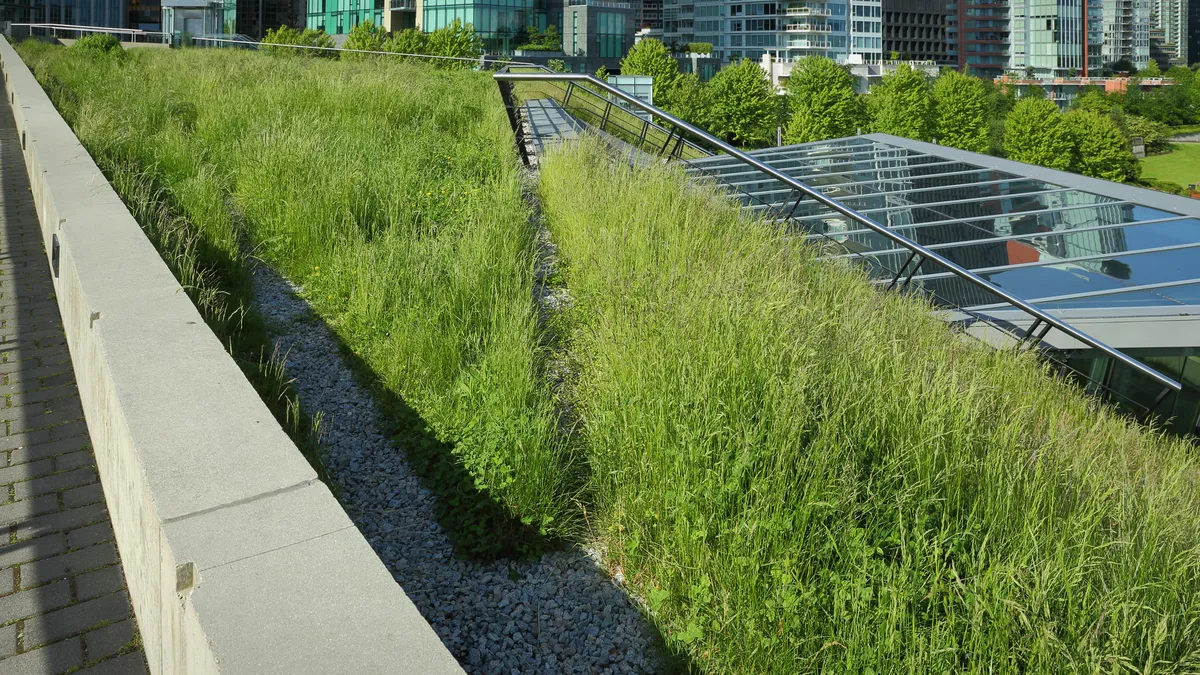Dive Brief:
- In its efforts to address climate change, the Biden administration this week released a nature-based solutions road map in conjunction with COP27, the United Nations climate conference currently happening in Sharm El-Sheikh, Egypt.
- The administration said it’s the first time the U.S. has developed a strategy to scale up nature-based solutions, which are a category of natural infrastructure with climate benefits that includes green roofs, rain gardens, urban trees and bioswales. The ultimate goal of the recommendations is to “address climate change, nature loss, and inequity,” according to the announcement.
- Potential strategies in the federal road map that could prove relevant to state and local governments include prioritizing permitting for projects that utilize nature-based solutions; retrofitting existing buildings; having guidance on integrating nature-based solutions into building standards and facilities management; and the role green banks can play in financing, among other recommendations.
Dive Insight:
As cities face weather events and conditions worsened by climate change, simple and cost-effective measures to build resilience to the likes of floods and heat will be key to both mitigation and adaptation.
In the U.S., “nature-based solutions” are considered “sustainable planning, design, environmental management and engineering practices that weave natural features or processes into the built environment to promote adaptation and resilience,” according to the Federal Emergency Management Agency. “Green infrastructure” is another popular term, it acknowledges.
These natural features and processes can help reduce flood risk, stabilize shorelines, lessen urban heat, and more. They can also offer upside in the form of green jobs, increased property values and benefits to public health, FEMA notes, and “often come at a lower cost than traditional infrastructure.”
Environmental advocates cheered the administration’s emphasis on nature-based solutions. Marcene Mitchell, World Wildlife Fund’s senior vice president of climate change, called the announcement an affirmation of “the critical role that the conservation of nature plays in fighting climate change, and the fact that these issues are two sides of the same coin.” And Sierra Club President Ramón Cruz said in a statement the U.S. must support policies that “harness our natural world in the global fight against climate change.”
The UN Environment Programme also recently highlighted nature-based solutions in an adaptation gap report it published in the lead-up to COP27. Previous estimates suggest that nature-based solutions could provide more than a third of mitigation needs until 2030 to hit Paris agreement targets. But the latest UNEP report noted that hybrid solutions are more effective than single interventions: Nature-based solutions are just one piece of the puzzle.
In a separate October report, UNEP focused on the opportunities and challenges for scaling up nature-based solutions. One of the key recommendations was to empower locally led action, including targeted funding and technical support to local communities.












